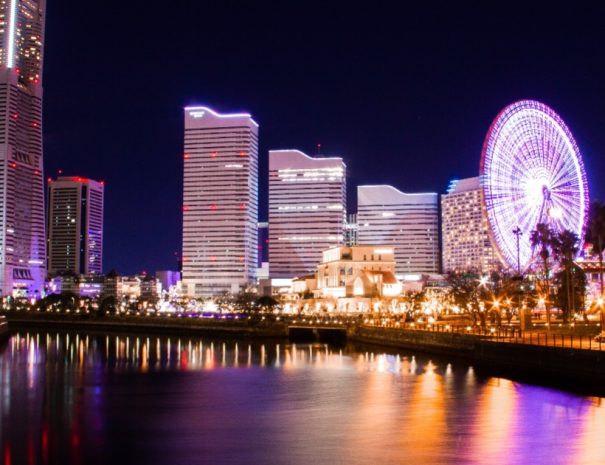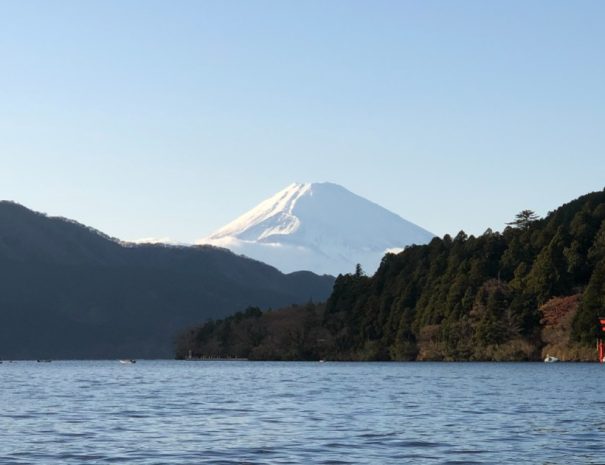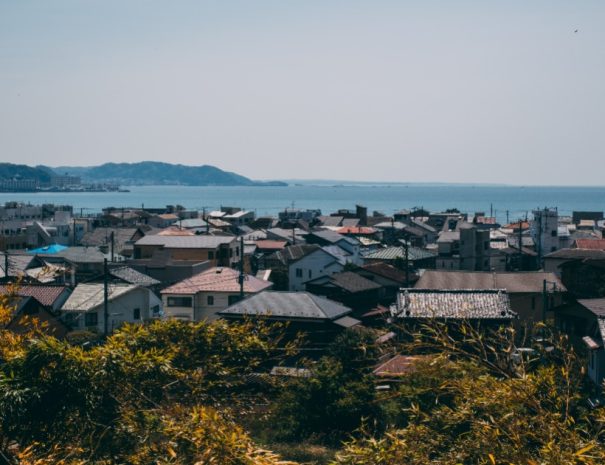4-Day Private Tour in Japan with Bilingual Chauffeur
Tokyo, Japan’s bustling city, combines ultramodern and traditional elements, from neon-lit skyscrapers to medieval temples.
Tour overview
4 days in Japan itinerary, Tokyo, Japan’s bustling city, combines ultramodern and traditional elements, from neon-lit skyscrapers to medieval temples. The city may bring you to intriguing stores, restaurants, and even off-the-beaten-path landmarks.
Mount Fuji is the highest peak in the world, rising to 12,388 feet, and is recognized for its elegant conical shape. It is the holy emblem of the country, and temples and shrines are constructed around and on the volcano.
Kamakura is a popular tourist destination with a plethora of Buddhist Zen temples and Shinto shrines. Hakone is a popular location for both Japanese and international tourists searching for a getaway from Tokyo.
The tour lasts around 10 hours, including travel time. A group of more than 5 people can be accommodated at an extra cost.
A chauffeur who speaks both languages, See all of the major attractions in a single day. If necessary, provide assistance in taking your photographs. No-hassle tour, Get local insights and tips. Make the most of your limited time by scheduling easy pickup and drop-off.



Tour itinerary
Day 1: Tokyo
Tsukiji Market is the world’s biggest fish market, and it has evolved into one of Tokyo’s most authentic and unique tourist attractions. Sensoji temple, also known as Asakusa Kannon and located in Tokyo’s Asakusa neighborhood, is the city’s oldest religious structure as well as one of the most colorful and popular. It is also the most visited temple in Japan and the most visited spiritual place in the world, with over 20 million yearly visits. Thirty minutes. The observation decks, which are positioned on the 45th level of their respective buildings, provide views from 202 meters above the ground. Meiji Jingu, Tokyo Tower, the Tokyo Skytree, and Mount Fuji can all be seen from the Tocho. With a staggering height, On November 11, 2011, Guinness World Records named Tokyo Skytree as the world’s highest tower, at a height of 634 meters. It is home to Japan’s Imperial Family. Edo Castle was the official residence of the Tokugawa shogun, who controlled Japan from 1603 until 1867. Take in the Imperial Palace’s East Garden. If you want to see inside the palace, you must make a reservation in advance. Akihabara is a bustling shopping district known for its electronics businesses, which range from little kiosks to massive department stores like Yodobashi Multimedia Akiba. Tokyo Anime Center has exhibitions and souvenirs, while Radio Kaikan has 10 floors of toys, trading cards, and collectibles. Meiji Shrine is a Shinto shrine in Shibuya, Tokyo, dedicated to the deified souls of Emperor Meiji and his wife, Empress Shken. It is surrounded by a lush green forest. The emperor’s burial, which is located in Fushimi-momoyama, south of Kyoto, is not housed in the temple. This famed Harajuku Boulevard is known for its zany, youth-driven stores selling bright and eccentric apparel and accessories. It’s also a sweet tooth’s dream – don’t miss the fluffy, sugary crepes. Shibuya Crossing is the world’s busiest pedestrian crossing, with up to 3,000 people passing over at any given moment. The vast scramble junction immediately outside Shibuya Station embodies Tokyo: movement in all directions.
The Tokyo Tower serves as both a communication and observation tower. At 634 meters, it is the world’s highest skyscraper. Tokyo Tower, designed after the Eiffel Tower, was completed in 1958. You travel through water and a garden, becoming one with the flowers. There are four large display halls as well as two gardens. If you have the time, you can visit this attraction. This 11m-tall model of Lady Liberty, a fixture on Odaiba’s seafront since 1998, is a popular picture opportunity with the Rainbow Bridge in the background. If you have the time, you can visit this attraction.
Accommodation is not provided.
Meals are not included.
Day 2: Kamakura and Yokohama
Ktoku-in is a Buddhist temple of the Jdo-sh sect in Kamakura, Kanagawa Prefecture, Japan. Its mountain name is Taiizan, and its popular temple name is Shjsen-ji. Hkoku-ji is an ancient temple in Kamakura, Japan, belonging to the Kench-ji school of the Rinzai branch of Zen Buddhism. It is also known as the “Bamboo Temple” because of its bamboo garden. The temple’s main image is a statue of Gautama Buddha, known as Shaka Nyorai in Japanese, in a holy hall. Hase-Dera, also known as Hase-Kannon, is a Buddhist temple in Kamakura, Kanagawa Prefecture, Japan, famed for holding a giant wooden figure of Kannon. The temple was initially part of the Tendai sect of Buddhism, but it later became autonomous.
Fugenzan Meigetsu-in is a Rinzai Zen temple of the Kench-ji style in Kita-Kamakura, Kanagawa, Japan. It is also known as The Temple of Hydrangeas because of its hydrangeas. The principal object of adoration is the goddess Sh Kannon. The “Sea Candle” lighthouse on Enoshima is a well-known Shonan symbol. Its viewing deck provides a breathtaking 360-degree view of Mount Fuji, Tokyo Tower, the Boso Peninsula, Izu Oshima, and other landmarks. The observation deck is accessible via elevator from the first floor.
Accommodation is not included.
Meals are not provided.
Day 3: Mountain Fuji
The eight springs of Oshino, Yamanashi, Japan are known as Oshino Hakkai. Mount Fuji’s aquifer water seeps into the earth to generate these springs. They are a Japanese natural landmark, part of the Mount Fuji World Heritage Site, and a major tourist destination in Yamanashi Prefecture. The five-story Chureito Pagoda in Yamanashi Prefecture is an important feature of Japan’s most famous landscape—the area surrounding Mount Fuji. It commemorates those who died during the First Sino-Japanese War in 1868 until WWII. Today, the pagoda serves as the focal point of the Arakura Sengen Shrine. Lake Kawaguchiko is the easiest of the Fuji Five Lakes to reach, having rail and bus links to Tokyo. A hot spring resort town with a variety of tourist attractions, A hot spring resort town with many tourist attractions and views of Mount Fuji is located near the lake’s eastern end, while the northern and western banks remain mainly underdeveloped. The Mount Fuji Panoramic Ropeway ascends 400 meters from the eastern edge of Lake Kawaguchiko to an observation platform near Mount Tenjo’s top. The observation platform, which is more than 1000 meters above sea level, offers panoramic views of the lake and Mount Fuji. Oishi Park is one of the greatest places to see Mt Fuji. The view from Oishi Park includes Mt Fuji in the backdrop, Kawaguchiko (Lake) in the middle ground, and the lavender of Oishi Park in the front. The lavender blossoms from the center.
Because the lavender blossoms from the middle of June to the middle of July, Mt Fuji is unlikely to have a snow crown. Explore a reproduction of an old Japanese hamlet as you stroll around this picturesque village. This is without a doubt one of the most popular attractions in the Fujikawaguchiko area. Beautiful thatched roofed homes face Mount Fuji and were restored with great care after the village was devastated by a landslide during a storm in the late 1960s. This magnificent park, located on Mt. Arakura’s slope and in front of Mt. Fuji, provides a panoramic view of the city. In the spring, many people enjoy the cherry blossoms in the park, and
Many people enjoy the cherry blossoms in the park in the spring, as well as climbing. Mt. Fuji draws hikers and climbers from all over the world, and the majority of them begin their ascents at the 5th station, halfway up the mountain. You may climb or drive to Fuji Subaru Line 5th Station for breathtaking views and enjoy a fantastic time in the ambiance of this Japanese emblem. Due to time constraints, Gotemba Premium Outlets will be eliminated from the schedule if you wish to visit this destination. Gotemba is considered Japan’s top green tea-producing region, with leaves cultivated near Mt. Fuji’s foot. Shizuoka Prefecture is recognized as Japan’s horseradish center, and Gotemba alone boasts a horseradish farm.
Accommodation is not provided.
Meals are not included.
Day 4:Hakone
Amazake-chaya Tea House was created 400 years ago and is a soothing spot for tourists to rest. Their amazake (sweet rice wine) is created according to a recipe that hasn’t been altered since it first opened. Amazake is non-alcoholic and has a little sweetness but no sugar. Even newborns can drink it! The Hakone Shrine is located on the shores of Lake Ashi at the foot of Mount Hakone. The shrine structures are hidden amid the deep woodland. Lake Ashinoko was created in the crater of Mount Hakone during the volcano’s final eruption 3000 years ago. It is a picturesque lake in the Hakone district of Kanagawa Prefecture in Honshu, Japan. It is a crater lake located on the southwest side of Mount Hakone’s caldera. The Hakone Ropeway is the name of both an aerial lift and its operator. The finite line connects Sunzan and Tgendai through wakudani in Hakone, Kanagawa, Japan. The line became a funnel in 2002, the second in the country after Hashikurasan Ropeway. Explore a beautiful vista through the rope method. Kuro-tamago, meaning “black eggs,” are normal chicken eggs cooked in the natural hot springs of Owakudani. The sulfur in the water darkens the eggshells to the color of charcoal. According to local legend, eating one egg will extend your life by seven years. Fuji-Hakone-Izu National Park is a national park in the Japanese prefectures of Yamanashi, Shizuoka, and Kanagawa, as well as the western Tokyo Metropolis. It includes Mount Fuji, the Fuji Five Lakes, Hakone, and the Izu Peninsula.
Japan. Mount Fuji, the Fuji Five Lakes, Hakone, the Izu Peninsula, and the Izu Islands are all part of it. The Fuji-Hakone-Izu National Park is 1,227 square kilometers in size. The Hakone Open-Air Museum is a nature-inspired outdoor sculpture exhibit. It is located in the Hakone highlands and spans 70,000 square meters with stunning views of the surrounding mountains. This art museum, which opened in 1969, was Japan’s first outdoor gallery.
Accommodation is not provided.
Meals are not included.
Includes:
- Water in a bottle
- A vehicle with air conditioning
- Transportation via private vehicle
- Tolls, parking fees, and fuel charges
- If needed, clients can get free photo and video help.
Testimonials
These 4 days in Japan itinerary was amazing. we appreciated not having to worry about driving, parking, or snapping photographs. Ahmad, our guide, was fantastic, and we had a great day. He kept us engaged the entire time by providing history and details about each location we visited. Skytree, Meiji Jingu Shrine, Team Lab Planets, Great Buddha, Enoshima Island, Lake Kawaguchiko, ropeway, 5th station, Lake Ashinoko, and Hakone Open Air Museum are among our favorites. We appreciated the traditional meals and beverages. We intend to return in the summer and will surely look you up! We had plenty of time to take in the surroundings at each stop. Our family had the finest experience ever.
Coelho
Mario
It’s a fantastic vacation that is well worth your time. We loved every minute of it. Excellent value for money. Our guide was really informed, prompt, attentive, and kind, and he precisely handled the time. We were really lucky to have this incredible tour. These 4 days in Japan itinerary was amazing.
Vera
Scussiatto
Tour highlights
- You must cancel at least 24 hours before the start time of the activity to get a complete refund.
- If you cancel less than 24 hours before the start time of the experience, you will not be reimbursed.
- Any modifications made less than 24 hours before the start time of the experience will not be allowed.
- The cut-off times are determined by the experience's local time.
- This experience is weather dependent. If it is canceled due to inclement weather, you will be given an alternate date or a full refund.
Important details
Point of convergence:
- We pick you up and drop you off at your hotel, residence, restaurant, or any other destination in Tokyo. Please let us know if you need to be picked up at a different place or dropped off at a different one. If your pickup location is not on the list, you can manually enter the information. Furthermore, we are willing to provide pickup and drop-off service outside of Tokyo for a fee.
Before you go, be aware of the following:
- When you book, you will receive confirmation.
- Wheelchair access is available.
- Accessible for strollers.
- Close to public transit.
- Infants must sit on their parents' lap.
- There are infant seats available
- The tour lasts around 10 hours, including travel time
- A group of more than 5 people can be accommodated at an extra cost.
- This is not a guided tour, although one may be arranged on request for an extra fee.
- The majority of travelers are able to participate.
- This is an exclusive tour/activity. Only your group will be present.
